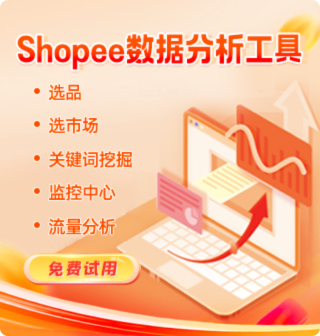-
用户129****6933
Mastering Shopee Operating Skills: A Comprehensive Guide for Sellers
Shopee has rapidly become one of the premier e-commerce platforms in Southeast Asia and beyond, attracting millions of buyers and thousands of sellers daily. However, succeeding on Shopee requires more than just listing products; it demands a well-rounded set of operating skills to optimize store performance, increase sales, and build a strong brand presence.
This article dives deep into essential Shopee operating skills, including practical strategies and advanced techniques that sellers can use to elevate their stores and achieve sustainable growth.
1. Understanding Shopee’s Platform and Ecosystem
Before diving into operational tactics, sellers must first grasp the structure and key features of Shopee:
Shopee Seller Center: The backend dashboard where sellers manage listings, process orders, track sales data, and run promotions.
Shopee Live: A live streaming feature allowing sellers to engage with customers, showcase products, and boost sales through interactive content.
Shopee Ads & Campaigns: Paid advertising and platform-wide sales events that increase visibility and traffic.
Shopee University: Shopee’s official learning portal offering tutorials, webinars, and tips for sellers.
Mastery of these tools is foundational to effective store management.
2. Product Listing and Optimization
a) High-Quality Images and Videos
Visual appeal is critical. Use clear, well-lit images with multiple angles and lifestyle shots to attract buyers. Incorporate short videos or Shopee Live sessions demonstrating product usage.
b) Compelling and Clear Product Titles
Craft titles that include relevant keywords but remain readable. Avoid keyword stuffing. For example, "Wireless Bluetooth Earbuds with Mic – Noise Cancelling" is more effective than just "Earbuds Bluetooth Noise Cancelling."
c) Detailed Descriptions & Specifications
Provide thorough product details, including size, materials, compatibility, and care instructions. Answer common buyer questions proactively.
d) Categorization and Attributes
Select accurate categories and fill in all product attributes (color, size, brand, etc.) to improve search ranking and filters.
3. Pricing and Promotion Strategies
Competitive Pricing: Research competitor prices regularly; undercutting too much can hurt profits, but pricing too high may reduce sales.
Use Vouchers and Shopee Coins: Offer store vouchers and encourage customers to use Shopee Coins to increase purchase incentives.
Bundle Deals: Create product bundles to increase average order value.
Flash Sales & Campaign Participation: Join Shopee’s official sales events (9.9, 11.11, 12.12) to gain exposure and boost order volume.
Free Shipping Thresholds: Set reasonable minimum purchase amounts for free shipping to encourage larger carts.
4. Inventory and Order Management
Accurate Stock Updates: Keep inventory levels updated to prevent overselling or stockouts, which lead to cancellations and negative reviews.
Efficient Order Processing: Ship orders promptly within the stated handling time. Use batch printing of shipping labels to save time.
Returns and Customer Service: Have a clear returns policy and respond quickly and politely to inquiries and complaints to maintain good ratings.
5. Leveraging Shopee Marketing Tools
Shopee Ads: Utilize Search Ads and Discovery Ads to target relevant keywords and categories. Monitor ad performance closely and adjust bids accordingly.
Shopee Live: Host live streams to engage with your audience, run product demos, and offer exclusive deals. This builds trust and can significantly increase conversions.
Shopee Feed: Post regular updates and product highlights to your followers to keep your store top-of-mind.
Shopee Affiliate Program: Collaborate with influencers and affiliates who promote your products for a commission, widening reach.
6. Data Analytics and Store Performance Optimization
Sales Analytics: Regularly review sales trends, best-selling items, and customer demographics via Seller Center reports.
Customer Feedback Analysis: Study reviews and ratings to identify product or service improvements.
Conversion Rate Tracking: Monitor the percentage of visitors who make purchases; optimize listings and ads to improve this metric.
Competitor Analysis: Keep an eye on competitors’ promotions, pricing, and product launches to stay competitive.
7. Enhancing Customer Experience
Fast and Reliable Shipping: Use reliable logistics partners, offer multiple delivery options, and provide accurate tracking information.
Personalized Customer Interaction: Use Shopee’s messaging tools to follow up on inquiries and thank customers after purchase.
Loyalty Programs: Reward repeat buyers with exclusive offers or early access to sales.
Packaging and Presentation: Invest in quality packaging to protect products and enhance brand perception.
8. Advanced Shopee Operating Skills
a) Cross-Border Selling
Expand your market by selling in other Shopee countries. Understand local regulations, shipping logistics, and customer preferences.
b) Private Label and Branding
Develop your own brand to differentiate yourself from competitors and increase customer loyalty.
c) Automation Tools
Use third-party software for inventory syncing, order management, and pricing adjustments to save time and reduce errors.
d) Continuous Learning
Stay updated with Shopee platform changes, new features, and e-commerce trends through Shopee University and industry forums.
Conclusion
Success on Shopee does not come overnight, but by mastering these operating skills, sellers can build a robust and profitable store. From optimizing listings and pricing smartly to leveraging Shopee’s marketing tools and analyzing data, every aspect plays a vital role in driving sales and fostering customer loyalty.
For sellers committed to learning and adapting, Shopee offers a dynamic platform full of opportunities to grow and thrive in the competitive e-commerce landscape.

